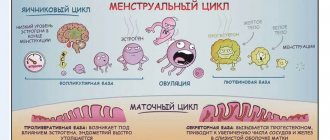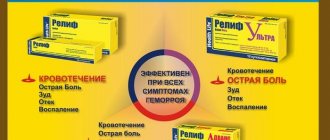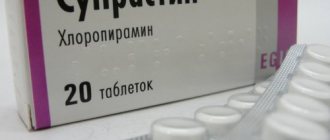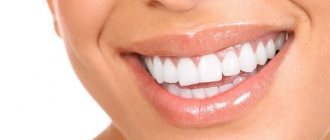- General information
- Historical facts
- Effect on the body
- How to recognize a drug addict
- Tests for codeine
- How long does it stay in the body?
- In blood
- In urine
- In the hair
- How long do drug addicts live?
- Codeine analogues
- How addiction is formed
- How to speed up drug withdrawal at home
- Detoxification in hospital
- Overdose
- How to recognize
- What to do
- Rehabilitation
- Coding
- Why you can’t undergo rehabilitation at home or on an outpatient basis
- Working with codependents
- Treatment in hospital
- How to quit on your own
- Resocialization
Attention! Drug use causes irreparable harm to health and poses a danger to life!
General information
Codeine is an alkaloid from the sleeping poppy. In its effect on the body, it is similar to morphine, but has a weaker effect. Opium contains approximately 0.1 to 2% codeine, while morphine contains 5 to 10%.
Codeine began to be used in pharmacology due to the fact that it strongly depresses the central nervous system. The most severe decrease in the activity of the cough center occurs. When taken in doses, drugs containing codeine relieve pain and eliminate cough, but only in the right dose. As the dose increases, neuronal damage occurs and the functioning of the liver, kidneys and heart is disrupted.
Codeine is added to cough syrups and painkillers. Basically, combinations of codeine with ibuprofen or paracetamol are made. Codeine-based cough syrups have been used in drinks since the 70s. Such “cocktails” are called “purple drank”.
Despite the great popularity among young people and the creation of an entire “cultural” movement, attention to codeine-containing drugs and their use appeared only after they began to be used to create desomorphine (the drug “krokodil”) at home.
The starting materials for the preparation of the drug desomorphine are cheap codeine-containing drugs: Pentalgin, Pentalgin Plus, Sedalgin.
Taken from a scientific article: Study of the spectroluminescent properties of codeine with the aim of determining it in certain drugs. Authors: V.V. Nemikhin, S.V. Kachin, T.S. Shakhvorostova.
Codeine with alcohol
It is strictly forbidden to take codeine with alcohol, since the interaction of these substances causes a serious threat to life. Codeine depresses the nervous system, and ethyl alcohol further enhances the sedative effect.
When combined, the respiratory center is depressed and asphyxia may occur. With deep depression of the central nervous system, a person risks falling into a coma or dying from lack of oxygen during sleep.
After consuming codeine-containing drugs, you can drink alcohol no earlier than 24 hours later, otherwise there is a risk of side effects.
Historical facts
Since the 19th century, codeine has been used as a cough tincture. In Russia, one of the first codeine-based remedies was Bekhterev's mixture. It relieved cough well, but was addictive. At that time little attention was paid to this.
Since the second half of the 20th century, codeine began to be used in cough syrups. The medicine really helped in the fight against cough, but had a large number of side effects. This forced insurance companies to conduct additional studies, during which it was determined that such drugs should not be given to children under 12 and pregnant women.
In the late 1970s, cough syrups gained popularity as cocktails. Their signature purple color became the basis for creating a new movement in hip-hop music. In the 1990s, rappers constantly starred in videos with white cups containing purple cocktails. These cocktails were based on the same cough mixtures with codeine.
Codeine was addictive and had a toxic effect on internal organs, which is why people who became dependent on such a drink died at a young age of up to 30 years.
In addition to using cocktails with cough syrup, drug addicts have appeared who use a large number of drugs in tablet and liquid form. Later, based on these drugs, they began to “cook” the drug “krokodil”, which is based on codeine. This drug has many side effects. Causes inflammation and decomposition of blood vessels and skin.
Given the demand for codeine drugs among drug addicts and the risk from home-made drugs, sanctions on codeine drugs were introduced. In Russia, the free sale of drugs containing codeine is prohibited. Violating the law can result in imprisonment for up to 12 years.
Drug overdose
A codeine overdose can occur when 200-300 mg of the substance is consumed. Half an hour after oral use, respiratory depression, neuropsychic overexcitation occurs, turning into drowsiness and lethargy, body temperature decreases, the pupils narrow, headaches, tinnitus, nausea and a burning sensation in the stomach are felt. Further, a deep coma may develop, in which all reflexes are absent.
First aid
If you suspect codeine poisoning, you should definitely call an ambulance. While waiting for doctors, you should try to bring the patient to consciousness, take him out into the fresh air, unfasten all buttons and locks, and, if necessary, perform artificial respiration. Lay the patient on his side and prevent the tongue from falling back.
If poisoning is caused by tablets, then, if possible, you should rinse the stomach, inducing vomiting after taking a large amount of liquid.
Health care
First of all, measures are taken to eliminate hypoxia, which necessarily occurs due to respiratory depression.
The airways are first cleared using bronchoscopy, then artificial ventilation is performed using special equipment. Hyperbaric oxygenation - saturation with oxygen under high pressure - is carried out in a pressure chamber.
Then antidote therapy is carried out - naloxone is administered as an opioid receptor antagonist.
Next, neurometabolic therapy is carried out:
- Combined antihypoxants – cytoflavin and reamberin intravenous drip.
- Cholinergic drugs - gliatilin slowly intravenously.
- Vasoactive drugs - in case of insufficient blood circulation - Cavinton intravenously.
- In case of an oral source of poisoning, gastric lavage, gastroenterosorption or intestinal lavage are performed.
Symptomatic therapy is carried out depending on the presence of certain symptoms and their severity:
- Intravenous infusions of sodium bicarbonate solution and combined saline solutions.
- Colloidal solutions for the prevention of cerebral and pulmonary edema.
- Osmotic diuretics.
- Plasma replacement liquids.
- Antibacterial drugs.
- Glucocorticosteroids.
- Enteral and parenteral nutrition products.
Consequences of lack of help
In the absence of timely medical care, a deep coma will develop with the disappearance of all reflexes. Respiratory paralysis will lead to death.
Lethal dose
A dose of 500-800 mg is considered lethal, which is approximately 60-100 tablets containing codeine. Although at the peak of codeine addiction, addicts can use more.
Effect on the body
In its pure form or in the form of syrup or cough tablets, codeine is toxic. The effect of codeine is similar to morphine. Both of these drugs are opiate receptor agonists. This means that they affect the body in the following ways:
- depress the respiratory center;
- disrupt the functioning of the heart causing arrhythmia, extrasystole, myocardial ischemia;
- inhibit the cough and cardiovascular centers;
- disrupt metabolic processes in the liver;
- reduce intestinal tone, slow down peristalsis;
- slow down metabolism in the liver and kidneys;
- influence the reaction, reducing the excitability of all sensory receptors;
- disrupt thermoregulation, reducing body temperature;
- reduce blood pressure and heart rate;
- suppress appetite.
Codeine affects pain receptors, increasing their threshold of excitability; in simple words, it reduces pain.
Using codeine with alcohol (as in popular purple cocktails) poses a high risk of developing toxic hepatitis. When combined with alcohol, processes in the central nervous system slow down even more, up to loss of consciousness.
Partial agonists of opioid receptors (codeine-containing drugs) have a pronounced effect on the central nervous system. It has an analgesic, hypnotic, and antitussive effect.
Taken from the book Pharmacology, edited by D.A. Kharkevich. 2017
Once in the body, codeine is immediately metabolized in the liver. The drug is excreted by the kidneys: about 10-15% in pure, unchanged form. When metabolized and processed by enzymes in the liver, codeine is converted to morphine and its metabolites. This causes the test to always be positive for morphine during drug testing.
Long-term use of antitussive drugs affects a person’s mental abilities. As a rule, the degradation of brain neurons leads to inhibition and decreased cognitive functions. Social perception is disrupted. The patient's ability to concentrate and learn is reduced. Races of ideas or, conversely, depression appear.
By binding to opiate receptors, antitussives lead to the development of physical dependence on the drug. Compared to heroin or morphine, this addiction develops more slowly, but it will happen in 100% of cases.
One of the side effects of codeine is constipation.
Taken from the book Pharmacology, edited by D.A. Kharkevich. 2017
Drugs containing the drug codeine also have a negative effect on the body. They cause attacks of bronchial asthma, the development of erosions and ulcers in the gastrointestinal tract, and reduce local and cellular immunity.
Formation of addiction
The reason for the development of codeine addiction is regular drug use. Once craving for a drug develops, tolerance increases. The body’s protective reaction weakens, and the usual dose becomes insufficient to achieve the previous drug intoxication. There are no signs of withdrawal yet, but psychological discomfort arises - a feeling of dissatisfaction. Regular drug use is the first stage of drug addiction.
Symptoms of the first stage:
- All thoughts are connected with the drug;
- Sleep becomes restless and superficial;
- No appetite;
- The mental impact of the previous dose fades away;
- Skin itching after taking a dose becomes less pronounced (over time it does not occur at all).
Refusal of the drug (or lack thereof) affects the emotional state after 2 days. There are no somatoneurological symptoms, but mental disorders are noted. The drug addict experiences psychological discomfort and craving for the drug, the emotional background is tense.
These symptoms characterize a change in reactivity, an increase in tolerance and the formation of mental cravings. When the drug is administered intravenously, a few injections are enough to form a persistent mental craving.
At this stage, as a rule, drug addicts do not recognize their addiction. The craving is so strong that it pushes you to commit a crime for the sake of the next dose.
At the second stage of the disease, reactivity reaches its peak. The drug is taken regularly and the frequency of use increases. Tolerance gradually increases. The form of drug intoxication changes - there is no physiological effect.
Symptoms of the second stage:
- There is no protective reaction to drug administration (vomiting, itching);
- The excretory function of the kidneys is restored, the stool is normalized;
- The rhythm of sleep is restored.
The most important criterion in the transition from the first stage to the second is considered to be a change in the narcotic effect. The intensity of the effect on the central nervous system decreases, which forces the addict to continue to increase the dose. The second phase of drug intoxication becomes much shorter. Without a dose, the addict experiences complete powerlessness. A persistent physical craving develops.
The third stage of the disease is characterized by a persistently formed psychophysiological dependence. The form of consumption is changing or distorted. Mental comfort is achieved only in drug intoxication. Physical dependence is characterized by a compulsive craving for a drug. When codeine is discontinued, withdrawal symptoms develop. The pathogenetic mechanisms of withdrawal are fully formed.
Neurophysiological mechanisms for the development of drug addiction are based in the limbic structures of the brain. There is a “reinforcement” system that is involved in the regulation of emotional states and psychophysical tone. The drug affects the activation of the “reinforcement” system and affects the metabolism of neurotransmitters.
Prevention of drug addiction and alcoholism /N. A. Sirota, V. M. Yaltonsky – 81 – 84 p.
How to recognize a drug addict
At the beginning of the development of addiction, it is difficult to determine that a person is becoming a codeine addict. You can only suspect it at the moment of the drug's effect or at the moment of abstinence (when the drug's effect has ended).
While the drug is in effect, the patient may be in a good mood. He is calm and reacts weakly to pain. He may have problems with orientation in space and time. The pupils are as narrow as possible, the heartbeat is slow, breathing is deep and slow. At the end of the drug's effect, deep sleep occurs.
In a state of withdrawal, the patient is irritable. He constantly goes into conflict for no apparent reason, constantly looking for something. Money or jewelry may disappear from the house. In a state without drugs, a person is capable of deception and even physical violence for the sake of a new dose. At this time, his eyes constantly dart, sudden movements appear, and his speech is fast, loud, but slurred.
The appearance of a large number of packages of cough suppressants can lead one to believe that it is a codeine addict. In the state of drug action, the patient does not think about disposing of the packages, and in the state of withdrawal he is concerned about finding a new dose.
Death from an overdose of opiates (including codeine) is associated with intoxication in 44%; in more distant periods, death occurs due to pneumonia or myocardial dystrophy. More rarely due to sepsis or posthypoxic encephalopathy.
Taken from the scientific article: “TOXICOLOGICAL CHARACTERISTICS OF OPIATE POISONING” author: Shigeev S.V.
But it is difficult to determine by appearance that a person is addicted to such a drug. Testing is always necessary to confirm.
Get help now
Do any of your relatives or friends have an addiction? Have you tried in every possible way to help, but as a result the person still returned to his past life?
You are not the first to encounter this problem, and we can help you.
We guarantee anonymity, we will persuade you to undergo treatment, and we will help you choose a center.
Call us
+7
or
Call me
Consequences of using codeine
A single use of the substance does not cause either physical or psychological addiction; this requires about 30 doses. Subsequently, codeine addiction develops slowly (compared to addiction to other opioids).
First stage
There is no pronounced withdrawal syndrome at the initial stage of codeine addiction. The absence of the usual dose affects the addict’s state only a few days later and is manifested by mental discomfort: a feeling of anxiety, tension, restlessness. In addition, this phase of the disease is characterized by:
- sleep disturbances (rest time decreases, sleep is shallow, but despite this, the codeine addict feels quite alert and well-rested);
- dysuric disorders (decreased amount of urine);
- constipation;
- increased tolerance: to achieve euphoria, an increasingly larger dose of codeine is required (3-4 times the original).
This stage of codeine addiction lasts up to six months, and the patient carefully hides his craving for the drug and resorts to various tricks to get the next portion of pills.
Second phase
Mental dependence reaches its peak and physical dependence gradually forms. Tolerance to the drug is growing, and the nature of drug intoxication is changing. The physiological effect of codeine also disappears. Usually, stool returns to normal, diuresis, colds and acute respiratory viral infections are accompanied by a cough, and sleep is restored. But in general, a person becomes very lethargic, both physically and when showing any emotions. Recovery occurs after taking the next dose of codeine.
Third stage
It is characterized by the presence of not only signs of drug addiction, but also the consequences of chronic intoxication. A drug addict uses drugs at intervals of 4–5 hours; without such “feeding,” he practically cannot fully move, respond to questions addressed to him, or do anything.
Symptoms of intoxication
Intoxication develops after taking 4–5 (or more) tablets. It occurs in several stages:
- Typical symptoms include flushing of the chest and face, itchy skin, a feeling of pleasant warmth, and a feeling of joy. Duration - up to 1.5 hours.
- Complacency, pleasure, and languor appear. Dream-like fantasies are possible. The patient is animated, talks loudly, is mobile, does not sit still.
- Shallow sleep, which is more like oblivion.
- General deterioration in health, feeling of anxiety, mild panic. Possible post-intoxication symptoms (nausea, tremors, etc.).
Picture of withdrawal syndrome
With codeine addiction, withdrawal usually occurs on days 2–6 and is accompanied by:
- dilated pupils;
- uncontrollable frequent yawning;
- lacrimation, nasal congestion, sneezing;
- chills;
- decrease or disappearance of appetite, rapid loss of body weight;
- sleep disturbances up to complete insomnia;
- muscle tension, myalgia;
- convulsions;
- psychomotor agitation;
- vomiting, diarrhea.
Without medical help, withdrawal symptoms can last up to two weeks, but residual effects can be seen several months after the last dose of codeine. This:
- periodically appearing uncontrollable desire to take a drug;
- depression;
- various sleep disorders;
- change in appetite;
- episodes of severe chills and sweating;
- exercise intolerance, etc.
Overdose
Typical symptoms of codeine overdose are:
- constriction of the pupils;
- respiratory depression;
- bradycardia;
- possible pathological agitation, convulsive seizures;
- in severe cases - coma (this rarely happens with an overdose of codeine or against the background of concomitant diseases of the cardiovascular, nervous system or respiratory tract).
Important! This condition requires emergency hospitalization and resuscitation measures to maintain respiratory function and immediate detoxification.
Tests for codeine
During metabolism, codeine is converted to morphine by liver enzymes. This allows codeine to be detected in the blood using standard morphine tests. There are practically no specific tests for codeine.
Codeine can be detected in the same ways as other drugs:
- using a urine test;
- when examining hair;
- using blood and saliva tests.
The most common method for determining the presence of such a drug in the blood is the use of test tablets. Such rapid tests have the ability to detect several drugs at once. This is important because codeine addicts often use other substances to enhance the drug effect.
Rapid tests or test tablets are not beneficial because they do not have legal force. But they are suitable for confirming the fact of use among family members. In judicial practice, a blood test or laboratory urine test is used.
In addition, the test strips do not indicate the dose of the drug used. This can be misleading, especially when testing people who actually use cough drops for medicinal purposes.
Among the test systems, the following companies have proven themselves well:
- Narcoscreen test strips.
- tablets "ImmunoChrom";
- testing from ;
- test systems "Boson" and "Wondfo";
Laboratory reagents and special equipment are used to determine the presence of drugs in the blood. Codeine can be detected using immunochromatography.
The amount of antibodies to a specific type of drug can be determined in the patient’s blood. This allows us to reliably say whether there has been long-term use.
Nail and hair analysis is very rarely performed due to the cost of the study. Such tests are useful because they allow you to determine whether you have used drugs in the past.
Laboratory tests cannot be fooled. If you ensure the correct collection of biological fluid for research, the result will be 99.9% correct.
It is not enough to have test systems or access to a laboratory. To obtain accurate information, you need to know what biological medium to take for analysis. This is due to the fact that the drug does not appear in the urine immediately, and does not last long in the blood.
Directions for use and their dangers
Codeine as a narcotic substance has many ways of use.
The speed of onset of drug intoxication depends on the method of use. Oral administration of syrups and tablets is not popular among hardened drug addicts. Because the narcotic effect is weak. The most common is the injection method - the solution is injected into a muscle or vein. The full concentration of the drug is delivered to the central nervous system.
Regardless of the method of use, psychophysical dependence develops. With the injection method of use, this happens twice as fast.
Codeine solutions tend to contain many impurities, causing toxic shock from the first dose. Unsanitary conditions when using drugs are the main reason for secondary infections (HIV, hepatitis).
With prolonged oral use, spasm of the biliary tract and intestinal paralysis develop. Codeine is highly hepatotoxic, resulting in toxic hepatitis.
How long does it stay in the body?
Unlike other drugs, codeine is metabolized quickly, but its onset of action is slower. The standard route of administration is oral (by mouth), except in cases of injecting drugs prepared in artisanal conditions.
The drug begins to act approximately 1 hour after use. This time is needed for the drug to enter the liver and begin to undergo enzymatic processes.
After 1 hour, metabolites can already be found in the blood. After another 2-5 hours, the drug appears in the urine.
The metabolic rate depends on what dose of the drug was taken, how long the drug was used, and whether there are any additional diseases of the internal organs.
How long does it stay in the blood?
Codeine stays in the blood for up to 12 hours. There are cases when the drug can be detected in the blood within 48 hours. Everything is individual. Basically, the time depends on the person’s body weight, length of use and the functionality of the liver and kidneys.
How long does it stay in urine?
The drug can be detected in urine 2-4 days after the last drug intake. From 80 to 90% of codeine is excreted through the kidneys in the form of metabolites, and 10-20% is excreted unchanged.
In 198 patients, in the first 48 hours, morphine breakdown products were detected only in the urine.
Taken from the scientific article: “TOXICOLOGICAL CHARACTERISTICS OF OPIATE POISONING” author: Shigeev S.V.
A urine test always shows an accurate result. If after 4 or more days the test is again positive, it is worth considering whether the person has used again.
How long does it stay in hair?
Hair can accumulate the drug and retain it for 6 to 12 months. If we ignore the cost of such an analysis, it is very informative. Considering where drug metabolites accumulate in the hair, the last time the drug was taken can be determined.
This analysis is problematic for people who constantly cut their hair short. In this case, no traces of codeine use may be found in the new hair at all.
Codeine. Effect
The pharmacological properties of opiates explain the popularity of the drug Codeine among drug addicts.
The effect on the body begins after reaching the maximum concentration of the main substance in the blood plasma. Codeine absorption occurs primarily in the small intestine. Within 50-60 minutes, the drug addict develops a euphoric state that can last from several hours to a day. The duration of the drug’s effect depends on the individual characteristics of the drug addict, the dose of codeine taken, and the length of drug use. The use of codeine has its own specific symptoms:
- cardiopalmus;
- shortness of breath;
- behavioral disorders;
- dilated pupils, incorrect reaction to light stimuli;
- attacks of nausea, vomiting;
- constant drowsiness, inhibition of reactions;
- dry mouth;
- irritation of the skin and mucous membranes.
Codeine addiction is characterized by rapid progression of pathology. If you identify reliable symptoms of codeine use in a loved one, it is recommended to consult an experienced narcologist. Its effectiveness depends on the timeliness of treatment started.
How long do drug addicts live?
Codeine is a toxic substance. People who use codeine drugs die at a very young age. Typically, codeine is added to cough syrups or combined with non-steroidal anti-inflammatory drugs. The latter can cause ulcers and intestinal erosions. Ulcers and gastritis, in turn, often become malignant and progress to the stage of cancer.
Destruction of liver hepatocytes and nephrons leads to acute liver or kidney failure. Sometimes the cause of death is respiratory or cardiac arrest.
Given the frequent combinations with alcohol, the drug addict experiences irreversible changes in the brain. Frequently using patients completely lose the ability to think normally and perceive the outside world.
The average life expectancy of people addicted to codeine is 30-32 years, subject to active use. If used periodically, such people live 3-5 years longer.
Consequences of chronic drug addiction
Chronic intoxication triggers irreversible degenerative processes in the central nervous system and changes the course of physiological processes in the body.
Consequences:
- Encephalopathy;
- Acute heart failure;
- Acute respiratory failure;
- Toxic hepatitis;
- Acute renal failure;
- Trophic ulcers;
- Immunodeficiency.
The body of a chronic drug addict is exhausted, death occurs due to dysfunction of vital organs and systems.
Life expectancy of a drug addict
Codeine addicts live no more than 5–7 years with systematic use. But, as a rule, death occurs much earlier from secondary pathologies and infections.
Codeine analogues
You need to understand that various combination drugs whose active ingredient is not codeine are not analogues. Codeine always acts the same in each drug.
For example, there may be a combination of a narcotic with ibuprofen or paracetamol. These are different drugs, but here and there they contain codeine, which has no exact analogues.
Drugs with a similar effect to codeine are, first of all, narcotic analgesics or opiate receptor agonists:
- morphine hydrochloride;
- methadone;
- promedol;
- nalbuphine;
- tramadol;
- thebaine;
- butorphanol
The most commonly used drugs that contain codeine are:
- Codelmixt;
- Solpadeine;
- Terpincode;
- Vicodin.
On the drug market, analogues of codeine are: heroin, opium, desomorphine. All drugs have a similar but more pronounced effect. Accordingly, such drugs are much more toxic than pure codeine.
Forms of release of drugs containing codeine
Codeine-containing medications are produced in the form of:
- tablets;
- drops;
- syrups.
The first form is the most common. Pills are prescribed for:
- migraines;
- toothache;
- pain syndrome after surgery.
In all these cases, the tablets include not only codeine, but also aspirin or paracetamol. The provided therapeutic effect manifests itself quickly and lasts for several hours.
People who often suffer from bronchitis with elements of obstruction clearly know which medications contain codeine. They use such compositions to cure debilitating coughing attacks and obtain an expectorant effect.
There are products on sale with codeine that are indicated for treating indigestion, relieving nervous tension, and normalizing sleep. No such medication should be used without first consulting a specialist.
How addiction is formed
Like any opioid receptor agonist, codeine causes physical dependence in 100% of cases, although slightly slower than its analogues. The formation of addiction occurs in stages. If you prevent the formation of addiction in the first stages, the rehabilitation process will be much faster and easier.
The dependency is formed like this:
- use of codeine-containing substances or drugs;
- stimulation of opioid receptors and release of their mediators;
- the emergence of psychological dependence on exogenous stimulants of opioid receptors;
- depletion of endogenous reserves of hormones and mediators;
- the formation of physical dependence on the constant supply of agonists from the external environment;
- the emergence of persistent physical and psychological dependence on drugs containing codeine.
In this sequence, persistent addiction develops, which cannot be cured on your own at home. Only proper rehabilitation by professionals will help a person.
Composition of the drug
At first, codeine was obtained directly from opium. However, the method of harvesting it by hand cutting the green fruit is not only too labor-intensive, but also involves partial illegal use of opium or poppy straw, which is difficult to control.
Scientists set out to chemically synthesize codeine. As a result, a method for methylating morphine was developed, and a method for producing codeine from organic compounds contained in coal tar was also invented. Codeine is used in the form of a free base or phosphoric acid salt in modern medicine as an antitussive and analgesic.
Currently, several drugs containing codeine are registered in the State Register of Medicines of the Russian Federation:
- Omnopon is a solution for subcutaneous use, used to relieve severe pain, mainly during surgical interventions. In addition to codeine, it contains morphine, thebaine, noscapine and papaverine, that is, the main alkaloids of the poppy hypnotic.
- Sedalgin-Neo, Sedal-M, Santoperalgin contain codeine, metamizole, paracetamol, caffeine and phenobarbital. Used in the form of painkillers.
- Nurofen Plus - ibuprofen with codeine, Pentanov-N - consists of codeine, metamizole, naproxen, caffeine and phenobarbital, as well as Codeine + Paracetamol tablets. All these drugs are classified as painkillers, anti-inflammatory and antipyretic drugs.
- Terpincode - cough tablets containing codeine in combination with terpinhydrate and sodium bicarbonate.
These medications are subject to strict subject-quantitative registration in pharmacies and medical organizations, which virtually eliminates the widespread abuse of codeine.
How to speed up elimination at home
Self-medicating and accelerating drug elimination at home is dangerous for the patient’s life. This is due to the exaggeration of drugs that people take to improve metabolism and elimination of the drug.
You can remove the drug at home only using standard methods. Such techniques do not harm the patient and activate his internal reserves.
What to do at home:
- Take sorbents. The route of administration of codeine is mainly oral, so sorbents in the first hours help reduce the absorption of the drug into the blood.
- Drink plenty of fluids. When drinking alkaline water (Borjomi, Essentuki) or even ordinary water, filtration in the kidneys accelerates. Accordingly, drug metabolites are eliminated from the body faster.
- Perform minimal physical activity or exercise. The more activity, the higher the body temperature. The higher the body temperature, the faster the metabolism and elimination of the drug.
If you took the drug no later than 2-3 hours ago, you can try gastric lavage. Drink 1-1.5 liters of water and artificially induce vomiting by pressing your fingers on the root of the tongue.
You can drink tea with a choleretic effect or perform liver tubage. The action of opiate receptor agonists leads to stagnation of bile and a decrease in the rate of drug elimination from the body. If you “start” the liver, the elimination of drugs will accelerate.
Withdrawal
Withdrawal syndrome from codeineism occurs approximately 4-5 months after the start of regular drug abuse.
Its main symptoms are similar to withdrawal symptoms due to morphinism:
- runny nose, frequent sneezing and watery eyes;
- increased salivation;
- dilated pupils;
- sleep and appetite disturbances;
- an irresistible desire to use codeine;
- changes in body temperature - chills and fever, goosebumps;
- discomfort caused by muscle tension throughout the body;
- joint and muscle pain;
- dyspeptic disorders in the form of severe pain in the intestines, diarrhea, vomiting.
With codeineism, the symptoms are less pronounced, intestinal disorders predominate. Withdrawal syndrome lasts longer - up to three to four weeks. As codeine addiction progresses, the withdrawal syndrome changes – striking symptoms such as runny nose, watery eyes, and muscle pain disappear. Instead, hypotension, depression, and severe weakness appear. The patient is characterized by hostility towards others and anger towards the whole world. Mood improves only with the use of new doses of codeine, which over time greatly increase and reach lethal levels.
Detoxification in hospital
It is much safer to speed up drug withdrawal in a hospital. This is due to the fact that you can constantly monitor the functioning of internal organs, in particular the heart.
In a hospital, you can easily use infusion therapy with 5% glucose, which accelerates the elimination of the drug and at the same time nourishes the tissues with energy.
Sorbents are also used in hospitals. The main advantage of inpatient detoxification is the availability of symptomatic therapy. Often, during “cleansing”, disturbances in the functioning of the heart or kidneys occur. In a hospital in such cases, it is possible to correct the functioning of these organs and reduce the risk of side effects from codeine.
Codeine: instructions for use
Indications
- Attacks of unproductive cough, the possible cause of which is bronchitis, bronchopneumonia, emphysema;
- Post-traumatic pain syndrome, kidney and liver pain, toothache, and cancer;
- Diarrhea of various etymologies.
As an anesthetic, Codeine is prescribed in combination with analgesics such as aspirin, paracetamol, ibuprofen. Can be used as a sedative in combination with sleeping pills.
Effect of the drug
The drug helps fight coughing attacks by acting on the “bridge.” It also has an expectorant effect and promotes the removal of sputum.
Can be prescribed as an antidiarrheal, antipyretic and sedative.
Codeine dosage
Codeine tablets are taken orally. The maximum daily dose for an adult is 120 mg.
The dosage of the drug depends on the indications for use:
- As an anesthetic: 15 – 50 mg every 4-6 hours;
- For cough: 10 – 30 mg four times a day;
- For diarrhea: 30 mg four times daily.
Only a doctor can prescribe the dosage of the drug. It is important to comply with these requirements and not exceed the permissible dose.
Side effects
After taking the drug, it is forbidden to drive or engage in work that requires increased concentration and attention, since codeine has a sedative effect.
Effects of codeine
When taking Codeine and drugs based on this active substance, the following negative reactions may occur:
- Problems with the digestive system, such as: nausea, vomiting, constipation, intestinal atony;
- Skin allergic manifestations: urticaria, itching;
- Disorders of the cardiovascular system: hypotension, arrhythmia, bradycardia;
- Nervous system disorders such as headaches and drowsiness. When using the drug in large doses, respiratory depression and disturbances in the movement of the eyeballs are possible.
- Side effects can also include: weight gain, bladder atony, addiction.
Overdose
When using a large dose of the drug, confusion, fatigue, unreasonable anxiety, cold sweat, dizziness, hypotension, convulsions, difficulty breathing, even asphyxia may appear. In severe cases, the patient may lose consciousness, stop breathing and fall into a coma. Without prompt medical intervention, death may occur.
Overdose
Overdose occurs less frequently in codeine addicts than in morphine or heroin users. But when it occurs, it is more difficult to save a person from negative effects due to the fact that codeine is used together with drugs that have a toxic effect on the liver, causing ulcers, osteoporosis, constipation, bronchospasm, arrhythmias and other complications.
With long-term use of codeine-containing drugs, dependence (physical and psychological) is formed.
Taken from the book Pharmacology, edited by D.A. Kharkevich. 2017
How to recognize
The clinical picture of a codeine overdose is similar to that of a heroin or morphine overdose. It is impossible to determine on the spot what kind of substance this happened.
The main signs of an overdose are:
- miosis;
- clouding of consciousness in the form of stupor, stupor or coma;
- reducing the number of respiratory movements to 5-8 per minute;
- blood pressure drop below 100 to 70 mm. rt. Art.;
- bradycardia (heart rate below 55 per minute);
- drop in body temperature.
The situation may give you an idea of what substance the overdose occurred. If there are syringes and needles, it is not codeine, but most likely heroin or morphine. If there are packets of tablets or cough syrup - codeine.
What to do
As soon as you are sure of your safety, call an ambulance. You can independently turn the patient to one side by placing a cushion under the head. This way you prevent aspiration of vomit. If you have already vomited, you need to clean your mouth with a rag or handkerchief wrapped around your finger.
If there is no breathing or heartbeat, proceed to chest compressions and artificial respiration. Do heart massage at a frequency of 120 shocks in 60 seconds. Every 30 times you need to inhale mouth-to-mouth. It is better to do this through gauze or a cloth to prevent the transmission of infectious diseases from a person with an overdose.
The ambulance can administer an antidote to opiates - naloxone. Codeine is metabolized into morphine, which allows naloxone to be used as an antidote. But it is worth knowing that the wrong dose of the antidote is dangerous for the patient’s life.
The ambulance will perform gastric lavage, thereby reducing the symptoms of overdose.
Signs of a drug addict
A patient with codeine addiction is practically no different from someone who uses other opiates: the same constricted pupils, dry mucous membranes, redness of the face, tachycardia, irritability, mood swings. Only the codeine user is distinguished by increased sociability, talkativeness, and a desire for active activity, while most opiate addicts are drowsy and inhibited. A codeine addict sleeps and eats little because the need disappears, and also suffers from constant constipation.
The longer a drug addict takes codeine, the more withdrawn, weak and embittered he becomes. A person may suspect that they are abusing codeine if they have a large number of painkillers containing codeine in their home.
Rehabilitation
Rehabilitation of codeine addicts should take place in a hospital. Withdrawal in such patients can be with withdrawal, like in heroin addicts. Codeine is highly addictive. Therefore, dependent people require constant work with a psychologist. In addition, resocialization and work with codependent people play an important role in the rehabilitation of such people.
What does rehabilitation include:
- cleansing the body;
- relief from withdrawal symptoms;
- treatment of concomitant diseases that arose while taking codeine-containing drugs;
- social rehabilitation;
- work with a psychologist and group rehabilitation;
- resocialization and return to society.
Remember that there is no recovery from drug addiction. A person can go into a phase of stable remission. But the risk that a person will want to use again always remains. Therefore, the more correctly the rehabilitation is carried out, the lower the risk of failure after treatment.
If during the rehabilitation process you use distraction therapy with a religious bias, the result will be better than rehabilitation without a religious component.
Taken from the dissertation: “Resocialization of drug addicts: socio-psychological aspects” by Kutyanova I.P.
Treatment and how to cure
Treatment for codeineism must be carried out in a psychiatric or specialized drug treatment clinic.
Therapy for any addiction is a complex, multi-stage, long-term individual process. First of all, it depends on the patient himself - his clear awareness of the presence of the disease and a strong desire to be cured. Therefore, it is important not only drug treatment, but also psychotherapeutic treatment. One without the other will not bring the desired result.
Drug therapy
Medicines used for drug therapy can be divided into three groups:
- Psychotropic drugs used in psychiatry and narcology - antidepressants (imipramine, clomipramine, trazodone), antipsychotics (clozapine, neurolepromazine, perphenazine), anticonvulsants (carbamazepine, lamictal).
- Specific medications used only in narcology are drugs that are antidotes or drug antagonists; in the case of codeine, these are naloxone and naltrexone.
- Systemic or somatic drugs that are prescribed in therapy and narcology - nootropics (piracetam, cavinton, aminalon), hepatotropes (ursosan, heptral, hepa-merz).
Psychotherapy
Psychotherapeutic treatment occurs in two directions: individual and group therapy. Each of the areas includes:
- Psychological adaptation – getting used to living in new conditions of sobriety.
- Psychological counseling – assistance in resolving problems and making decisions regarding all areas of a new life.
- Psychological correction is the formation of the necessary psychological qualities to maintain adaptation to new living conditions.
- Occupational therapy - developing the skill to work, increasing motivation for work, an adequate feeling of being a full-fledged member of society - significant, useful and valuable.
- Environmental therapy, art therapy, autogenic training, social rehabilitation work are other ways to restore the individual socially and psychophysiologically.
Outpatient or home treatment
Dependence on any psychoactive drug is treated only in a hospital under the supervision of specialists. If it were possible to recover at home, following the doctor's testimony, then drug addiction would not be such a common disease.
To send a patient home for treatment, you need to be confident in his firm decision to quit. But even the person himself cannot be sure of this. Once at home, the drug addict will begin to mechanically look for reasons and opportunities to use a new dose.
Coding
Coding involves getting rid of addiction in 1 appointment with a doctor or person who conducts the session. In practice, efficient coding does not exist. Evidence-based medicine does not provide examples of successful coding that would help the patient.
All coding features involve intimidation of patients or psychological pressure. Such methods may not be effective for everyone, mainly, in rare cases, for alcoholics and smokers. This doesn't help with drugs.
Medicinal effectiveness of codeine for cough
Opiate-containing drugs have a central effect. Cough is eliminated by eliminating the cough reflex. The opiate has a stimulating effect on the opioid receptors of the brain, helping to reduce the excitation of the center that signals coughing.
When taken orally, a person stops coughing after about half an hour, the effect lasts about 6 hours.
There are many antitussive codeine pharmaceuticals. Let's look at some of them:
- Codesine
- Kodarin
- Terpincode
- Solpadeine
- Tedein
Why you can’t do it at home
Drug addicts who are addicted to opioid agonists require daily monitoring of their health and constant psychological work. Without control, a breakdown occurs in the first days of abstinence, and all the work in the rehabilitation center will be in vain.
Self-administered or outpatient treatment should only be used by highly motivated people. In fact, these are only a few users. The rest relapse in the first days or weeks after stopping taking the drug.
It is necessary to carry out daily psychological work. It is important to restore the “I” destroyed under the influence of drugs, to allow the patient to communicate with other patients and not to leave him alone.
After drug withdrawal, depression may occur, which leads to suicidal thoughts. In an outpatient setting, it is difficult to monitor this and therefore it is impossible to properly treat this condition.
The important point is that a person who wants to quit does not have time to go to the doctor for a consultation, or is simply too lazy. Thus, outpatient treatment is not suitable for the rehabilitation of opiate addicts.
Consequences
Regular use of codeine medications has a negative effect on the body and disrupts the normal functioning of internal organs. The harm from taking a pharmaceutical drug also depends on why it was used.
Taking codeine for pleasure can cause a number of unpleasant symptoms:
- Allergy, in the form of swelling, vomiting or bronchospasm
- Atrophy
- Anemia
- Gastrointestinal diseases
- Problems with the cardiovascular system
- Exacerbation of chronic diseases
- Decreased libido, problems with potency
- Infertility is also common
- Depressive states
- Insomnia or sleepwalking
Working with codependents
Codependent people are relatives, parents, husband or wife. Such people suffer first of all together with the dependent person. Therefore, they can be both the cause of a new breakdown and a reason to stop using.
Codependents must be able to recognize attempts at new use and know how to prevent them. It is believed that close people do not believe or do not see the problem until the last moment. The task is to teach them not only to see the problem of drug addiction in their loved ones, but to tell them how to overcome it.
Treatment in hospital
In a hospital, treatment occurs not only with drugs. Use distraction therapy methods. For example, they conduct classes for patients in addiction groups, engage in occupational therapy, and help establish connections with others.
There is no specific drug therapy. The doctor’s task in a hospital is to eliminate the consequences of the toxic effects of drugs on internal organs, ensure the normal functioning of the heart and liver, and monitor normal diuresis.
In case of a sharp deterioration in the condition, a team of resuscitators is always on duty in the hospital. Although with proper treatment the need for their help is minimal.
During withdrawal in a hospital, you can put the patient into an artificial coma. Due to this, withdrawal will be painless and without harm to the patient. Treatment is individual. There are no strict algorithms or recommendations.
In case of mental health problems in a hospital, tranquilizers or psychotropic drugs can be prescribed in the correct dose. Treatment with such drugs at home can cause the death of the patient.
Literature:
- Medicines in the neurological clinic: handbook. for doctors / E. I. Gusev, A. S. Nikiforov, A. B. Gekht. — 2nd ed., erased. - Moscow: MEDpress-inform, 2006 (M.: Printing house "News"). — 405 p.
- Basics of pharmacology. Workshop: textbook / V. A. Astafiev. — Moscow: KNORUS, 2021. — 212 p.
- Current problems of the drug situation among young people: status, trends, prevention / [ed. : Sheregi F. E. et al.] ; Ministry of Education and Science of Russia. Federation, Center of Sociol. research — M.: Center for Social Sciences. forecasting, 2004. – 499 p.
How to quit on your own
Out of 10 people, only 1 can quit drugs on their own. To do this, it is necessary to eliminate all contacts with those who use or distribute any drugs. This way there will be less temptation to use again.
You can’t put off the “tie” for other days. If you start, then from the day you decided. Putting it off until later will result in no results.
It is necessary to prepare for withdrawal and withdrawal symptoms. Eliminate all social contacts that could trigger a breakdown. The causes of disruption are often conflicts at the everyday level with family members. Therefore, you need to be mentally prepared for this or wait out the critical moment in another place.
You definitely need to find something to do that will distract you from the thought of using drugs. For example, work that brings pleasure, playing sports, walking, reading books, etc.
Codeine addiction
Codeine has a weak narcotic effect, it is about 40 times weaker than heroin. However, it is worth considering that once in the body, it is converted into morphine. Therefore, it is worth understanding that codeine addiction is a very serious disease.
A single use of an increased dose does not provoke addiction. A person simply likes the feeling of euphoria that is achieved as a result of consumption, so he dreams of repeating the “high” again.
Regular use of the substance causes addiction; if a person does not take the dose in a timely manner, unpleasant withdrawal symptoms will begin to appear. The main symptoms are depression and decreased performance. Codeine addiction requires mandatory treatment.
Resocialization
Resocialization is the last stage in rehabilitation. As soon as a person recovers from addiction, he needs to return to society. To do this, you need to help him recover, give a new assessment to his new self. It is important to restore faith in your capabilities and get rid of the mental cliché of an addict.
It is very difficult to do this on your own. You need to constantly communicate with other people or a psychologist. An excellent way to resocialize is to learn a new profession or master a new field of activity.
As soon as a person returns to society, the risk of relapse is reduced to a minimum. If this does not happen, it is necessary to undergo further rehabilitation, otherwise there will be no point in it.







